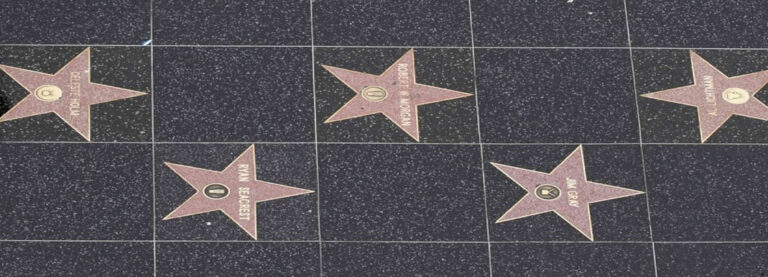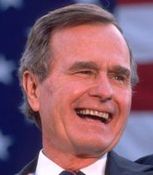
 On November 30, 2018, George H.W. Bush, 41st President of the United States, died of vascular Parkinsonism, a disease with many of the same risk factors as those for strokes and a heart attack. However, he did not have the two major risk factors for heart attacks: He was not overweight and he exercised regularly (and vigorously, at least in his younger days).
On November 30, 2018, George H.W. Bush, 41st President of the United States, died of vascular Parkinsonism, a disease with many of the same risk factors as those for strokes and a heart attack. However, he did not have the two major risk factors for heart attacks: He was not overweight and he exercised regularly (and vigorously, at least in his younger days).
Bush lived an honest and moral life. He was a decorated naval combat pilot during World War II, served two terms as the nation’s vice president and one term as President. His scandal-free administration helped to liberate Kuwait from the Iraqi dictator Saddam Hussein, and he signed the Americans with Disabilities Act and the Clean Air Act. He was also the U.S. ambassador to the United Nations, chairman of the Republican National Committee, chief of the U.S. Liaison Office in China, and director of the Central Intelligence Agency. He raised millions of dollars for charities such as the M.D. Anderson Cancer Center, the Points of Light Institute and a coalition of cancer organizations.
His Life Story
Bush was born on June 12, 1924 to a father who was a wealthy investment banker and was a Republican senator from Connecticut from 1952 to 1963. Bush went to an exclusive boarding school, Phillips Andover Academy, where he was a mediocre student with grades mostly in the 60s and 70s. However, he was a very good athlete, serving as captain of the baseball and soccer teams, and was president of his senior class. After being graduated from Andover, he enlisted to become the youngest pilot in the Navy and flew fifty-eight combat missions. He received the Distinguished Flying Cross after his plane was shot down and he was rescued by a submarine.
In 1945 he married the love of his life, Barbara Pierce, and they stayed married for 73 years, the longest presidential marriage in U.S. history. He was honorably discharged from the navy and entered Yale University, where he played in the first two College World Series and captained the baseball team with a .224 batting average. He then moved to Midland, Texas, to work selling oil industry products. In 1950, he started an oil development company which later became Zapata Petroleum that developed offshore drilling equipment, and they moved to Houston. He became the Republican Party chairman in Harris County, Texas, lost an election for the U.S. senate but then won a seat in the U.S. House of Representatives. In 1970, he was appointed U.S. ambassador to the United Nations and in 1973, Richard Nixon appointed him chairman of the Republican National Committee. After Nixon resigned from the presidency in August, 1974, his successor, Gerald Ford, appointed Bush to be the U.S. envoy to the People's Republic of China. The next year he became director of the Central Intelligence Agency (CIA).
When Ford lost the election to Jimmy Carter, the Bushes left Washington and returned to Houston, but a few years later they sold their house in Houston and bought his grandfather's estate in Kennebunkport, Maine. In 1980, Ronald Reagan selected Bush to be his running mate, and Bush served two terms as vice president.
The Presidency
In 1989, Bush defeated Michael Dukakis to become the first-serving vice president to be elected president since 1836. That year, after the fall of the Berlin Wall, he met with Mikhail Gorbachev and both renounced a possible nuclear war. In July 1991, he signed the Strategic Arms Reduction Treaty (START I) with Gorbachev in Moscow. In that same year, he met with Russian president Boris Yeltsin to mark the end of the Cold War.
On August 2, 1990, Iraq invaded its oil-rich neighbor to the south, Kuwait. Early on the morning of January 17, 1991, allied forces sent coalition aircraft on more than 4,000 bombing runs and continued bombing for the next four weeks. Then, on February 24, allied forces launched a ground invasion and after just 100 hours, Bush stopped the offensive after Saddam Hussein had already lost his army and air force.
Sky Diving and Horseshoes
After losing his bid for a second term as president, Bush retired from politics but remained very active. Since he had bailed out of his plane during combat in World War II, he tried skydiving for fun and jumped out of a plane at least four more times: on his 75th, 80th, and 85th and 90th birthdays. For his 90th, he jumped out of a plane 6,000 feet above ground harnessed to a retired member of the army's elite Golden Knights parachute team.
He was also an expert competitive horseshoe thrower who averaged an outstanding 25 ringers a game. He had added a horseshoe pitch area next to the White House swimming pool that was used for horseshoe tournaments with the White House staff. Queen Elizabeth gave him special horseshoes when she visited the White House in 1991.
His Medical History
At age 94, he was the oldest living former U.S. president. He died of vascular Parkinsonism, a condition caused by repeated small strokes that damage the same parts of the brain as those affected in Parkinson’s disease. Usually vascular Parkinson's patients do not have tremors, and drugs used to treat Parkinson’s disease are of no benefit. Patients usually look like they have Parkinson’s from the waist down and are unable to control their legs, so they walk with shuffling steps. Vascular Parkinsonism, like strokes, can cause depression, abnormal behavior and loss of memory. Many patients with vascular Parkinsonism are not debilitated for years, but the disease eventually deprives them of their ability to use their legs and late in the disease, they are usually confined to a wheelchair. Risk factors are the same as for strokes and heart disease: history of smoking, lack of exercise, a pro-inflammatory diet, and excess body fat — none of which applied to Bush.
The usual treatment for vascular Parkinson's patients includes regular exercise, a healthful diet and a daily aspirin. To help prevent falls, they are given physical therapy to improve balance and a progressive supervised exercise program. The exercise program is especially important in helping the patients retain use of their legs. The standard treatments for strokes, include lowering cholesterol and treating diabetes, have had little or no effect for vascular Parkinson's patients.
Signs of Disease Progression
Overall, Bush was quite healthy except for some skin cancers from too much sunlight, but over his last five years, he went from a vigorous lifestyle to a wheelchair-bound existence. The progressive loss of his leg muscles caused him to be very inactive which markedly increased his risk for a weak heart and lung disease.
• December 2012, he was admitted into a Houston intensive care for a bronchitis-related cough.
• December 2012, he was admitted into a Houston intensive care for a bronchitis-related cough.
• December 2014, he was in Methodist Hospital in Houston for shortness of breath.
• 2015, he fell and broke bones in his neck, needing surgery.
• 2015, he was placed in intensive care for pneumonia. His 91-year-old wife was also admitted to the hospital.
• January 2017, he was admitted to intensive care for pneumonia. Over the 16-day stay, he had a breathing tube connected to a ventilator inserted into his airway.
• April 2017, his wife died and he was admitted to Houston Methodist Hospital for an infection that had spread into his bloodstream.
• May 2018, a week after arriving in Kennebunkport for the summer, he was admitted to the hospital for low blood pressure and fatigue.
• November 30, 2018, he died of the many complications caused by his multiple strokes: heart failure and pneumonia that deprived his body of oxygen, and a weakened immunity that led to overwhelming infections.
He Did Everything Right
Readers of my biographical articles on the deaths of notable people often comment on how frequently I criticize my subjects for their self-destructive lifestyle choices — lack of exercise, a lousy diet, promiscuity, smoking, excess alcohol and drugs — that shortened their lives, and ask why I don't ever write about people who do everything right. It is a pleasure to write about George H.W. Bush, who followed all the rules and lived a long, active life until his last few years, when he succumbed to a disease that has no specific known cause and no effective treatment. He worked hard, stayed married faithfully to one woman, and tried to make the world a better place for the rest of us.